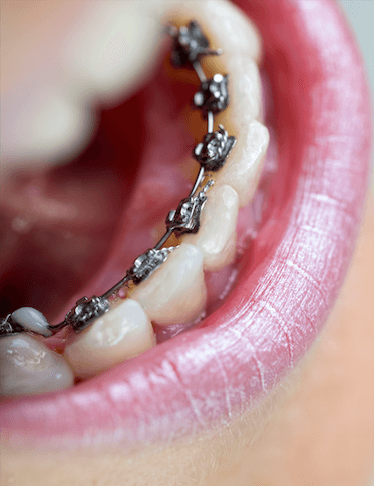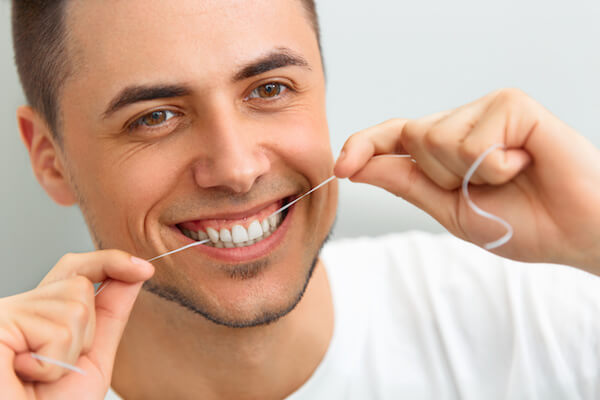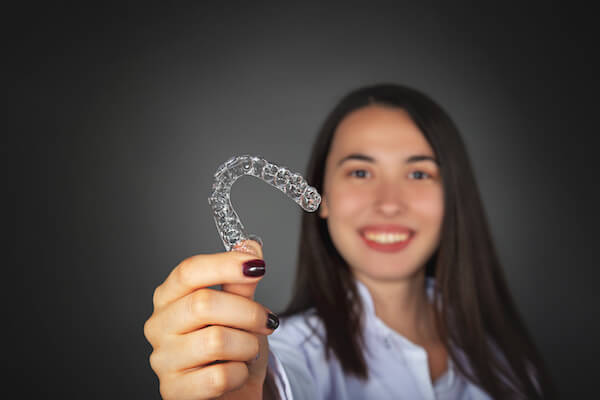5 Ways to Get Comfortable with Your New Braces

There is no way around it, it’s going to be a bit uncomfortable and somewhat painful when you first get your braces. While the entire experience will eventually get better, the first few days or even weeks are going to be filled with discomfort, soreness, tenderness, and pain. Luckily, there are some things you can do to make things more comfortable for you while wearing braces.
Tip #1 – Keep Yourself Hydrated
Keep yourself hydrated, it’s that simple. Staying hydrated will make wearing braces more comfortable. The coolness of the water can reduce any inflammation from the brackets or wires. Water will work as a temporary pain reliever, numbing agent, and anti-inflammatory.
Water will also prevent your mouth from becoming extremely dry. Braces can cause small cuts on the cheeks and gums if the mouth is too dry. Drinking water throughout the day will keep your mouth from getting sore or damaged.
Tip #2 – Rinse Your Mouth With Warm Salt Water
Combining a half teaspoon of salt with warm water can help you naturally relieve any pain and discomfort you experience in the first few days of wearing your braces. The warm water and salt rinse work to reduce inflammation. This makes things more comfortable for you by relieving some of your pain.
Tip #3 – Don’t Eat Crunchy or Hard Foods
Pecans, almonds, and hard candy should be avoided when you have braces. Your entire mouth is going to be sore and painful the first few days after getting braces. It’s recommended that you stick to only eating soft foods that require little to no chewing.
Eating soft foods, such as mashed potatoes, smoothies, and yogurt, will reduce the pain and discomfort you experience. It’s due to the fact that you’re not moving your mouth and jaw around a lot or as much. Limiting mouth and jaw movement will give you time to adjust to wearing braces. It also allows your teeth, gums, and mouth to naturally heal and adjust to the braces so that you experience less pain and discomfort.
Tip #4 – Try Eating Cold Foods
Just like water, the coolness of certain foods like frozen yogurt, ice cream, or popsicles can help reduce any gum swelling you experience when your braces are first put on. Try to incorporate these foods into your daily diet for the first few days as it will help reduce inflammation and even relieve some of your pain.
Tip #5 – Learn How to Use the Items in Your Orthodontic Kit
Every person who wears braces will have a small orthodontic kit that contains helpful tools and items. Learning how to properly use the items can help you reduce any pain or discomfort you experience. This will not only sooth the pain in the first few days of wearing braces, but also throughout the entire course of your orthodontic treatment.
Using your Orthodontic Kit
Some of the items that can be found in an orthodontic kit that will help any discomfort include:
- Orthodontic wax – can be used to add a layer of padding to any sharp points or edges that can be found on your wires or brackets. Orthodontic wax is also helpful if your brackets or wires break throughout the course of your treatment. The wax can be put on the broken bracket or wire so the sharp parts don’t stick or poke your gums or cheeks.
- Lip gloss or lip balm – protects your lips from getting cracked or scratched by your braces
- Dental floss – floss helps remove any food that may be stuck in your braces. Stuck food can often cause pain and discomfort, especially when you get new braces.
Valderrama Orthodontist wants to make sure that every patient has a positive experience with wearing braces. That is why we take the time to make sure that each of our patients learns valuable tips and tricks that will reduce any pain and discomfort.
Have any additional questions about how to reduce pain and discomfort associated with wearing braces? Feel free to contact our office and ask any questions you may have. Our staff will try to help you find comfort in your new braces.











Let's Get Social